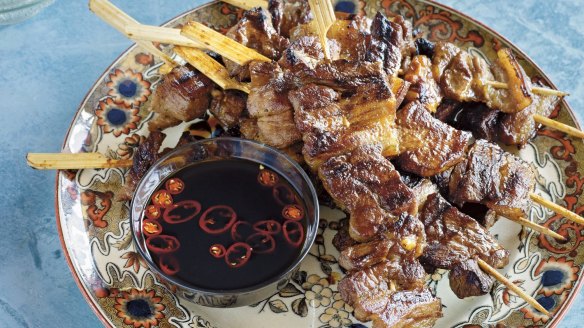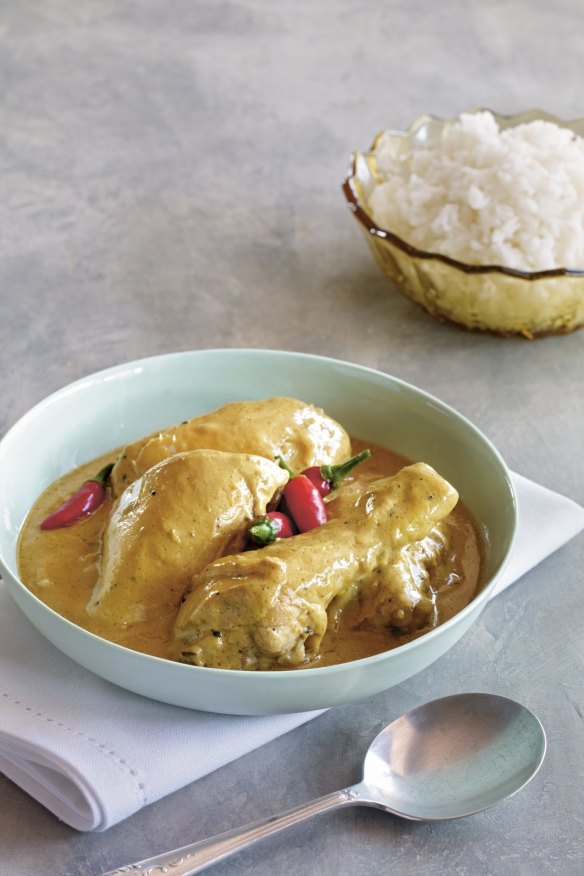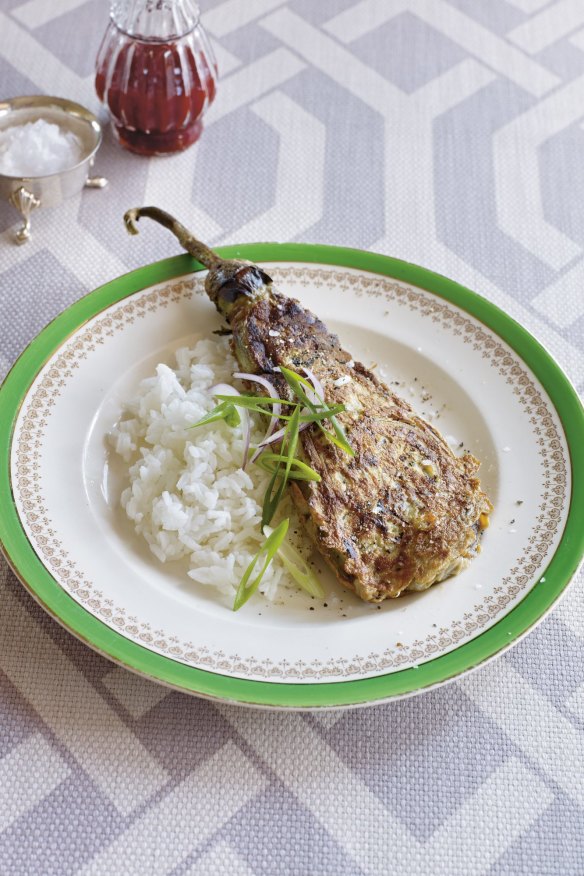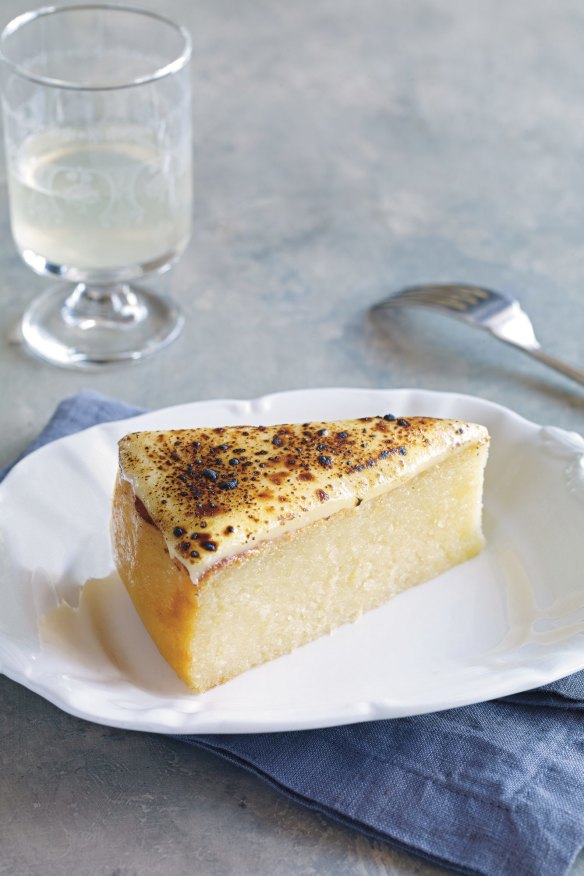Filipino favourites: Four recipes from the Philippines to you

Australian-Filipino food writer and photographer Yasmin Newman honours the food of the Philippines in her first book, 7000 Islands: Cherished Recipes and Stories from the Philippines. In it, she discovers the land of her Filipino mother through the lens of food. Newman says most of the ingredients needed to make delicious Filipino dishes are staples we probably already have in the pantry. And whatever's missing can be found at any good Asian supermarket.
Pork barbecue
Pork barbecue is a true national favourite. It crosses economic boundaries and appears in a variety of settings as street food, party food, served as a beer snack or a main meal with rice. There are countless variations. Generally, meat to fat ratio defines the good ones; this recipe uses half-half pork shoulder and belly. And the key ingredient? Pineapple juice or lemonade for flavour and tenderising.

INGREDIENTS
- 500g boneless pork belly, skin on
- 500g boneless pork shoulder
- 250ml (1 cup) pineapple juice or lemonade
- 125ml (½ cup) soy sauce
- 80g (⅓ cup firmly packed) brown sugar
- 1 garlic bulb, cloves smashed
- 2 long green chillies, thickly sliced
- 2 red bird's-eye chillies, thickly sliced
- 2 tsp salt flakes
- 2 tsp freshly cracked black pepper
- vegetable oil, for cooking
- toyomansi* and steamed rice to serve (optional)
METHOD
- Trim any excess fat from the pork belly and shoulder, then cut the pork belly into 6mm thick slices, then into pieces about 4cm wide. Cut the pork shoulder into 1cm thick slices, then into pieces about 5cm wide.
- Place the pineapple juice, soy sauce, sugar, garlic, chilli, salt and pepper in a large non-reactive shallow dish and stir until the sugar dissolves. Add the pork and massage the marinade into the meat using your hands. Cover with cling film and refrigerate for at least 3 hours, preferably overnight.
- Soak about 25 bamboo skewers in water for 20 minutes to prevent them from burning during cooking.
- Preheat a charcoal or regular barbecue to medium. Drain the pork, reserving the marinade. Alternately thread 1-2 pieces each of pork belly and shoulder onto each skewer (don't bunch up the meat), then brush both sides with oil.
- Cook the skewers, in batches, for 6-8 minutes, turning and basting occasionally with the reserved marinade until cooked through and slightly charred. Remove from the heat and serve with toyomansi and steamed rice, if desired.
Serves 6
*Toyomansi is a classic Filipino dipping sauce made from toyo (soy sauce) and kalamansi (native citrus). You can make your own, substituting lemon or lime juice, and add bird's eye chillies to taste.
Chicken adobong (chicken and coconut milk adobo)
Coconut milk melds magically with vinegar, tempering the acid base of adobo and adding a creamy richness.

INGREDIENTS
- 170ml (⅔ cup) coconut or rice vinegar
- 400ml coconut milk (gata)*
- 60ml (1⁄4 cup) soy sauce
- 6 garlic cloves, smashed
- 3cm piece turmeric or ginger, peeled and thinly sliced
- 3 bay leaves
- 3 red bird's-eye chillies, plus extra to serve (optional)
- 1 tsp freshly cracked black pepper
- 1 whole chicken, jointed into 8 pieces with bone in
- steamed rice, to serve
METHOD
- In a large non-reactive bowl, combine the vinegar, coconut milk, soy sauce, garlic, turmeric, bay leaves, chillies and pepper.
- Add the chicken and turn to coat, then cover with cling film and leave to marinate in the refrigerator for at least 3 hours or overnight.
- Transfer the chicken mixture to a large, deep saucepan. Bring to the boil, then reduce the heat to low-medium and cook for 25 minutes, or until the chicken is cooked through. Using tongs, transfer the chicken to a bowl and cover to keep warm. Increase the heat to medium-high and cook the mixture for 10 minutes, stirring occasionally, until slightly thickened and reduced. Discard the turmeric, bay leaves and chillies.
- Return the chicken to the pan and warm through. Transfer to a serving bowl, scatter with extra chillies, if using, and serve with steamed rice.
Serves 4-6
*Gata is the generic term for liquid extracted from mature coconut meat. In the Philippines, it is still made the traditional way: coconut meat is finely grated and a little hot water is added, then the mixture is squeezed for the thicker coconut cream or "first pressing" (kakang gata). This process is repeated to extract coconut milk or "second pressing" (gata).
Tortang talong (eggplant omelette)
Tortang talong* tops my Filipino breakfast list. While common in Filipino homes, their appeal for me is exotic. You'll need flames to char the eggplant, but a stovetop will do; burnt skin infuses smoke into the flesh. The hard stalk (with tongs to grip it) makes life easy; all you have to do is turn. My tip? Sit the omelettes for 15 minutes or so once they're cooked, until they hit room temperature. The wait gives those smoky flavours time to work their magic.

INGREDIENTS
- 4 Japanese eggplants
- 4 eggs
- ½ small red onion, thinly sliced
- 2 tbsp vegetable oil
- steamed rice, to serve
METHOD
- Working with one eggplant at a time, place an eggplant over a medium-high flame. Cook for 5-6 minutes, turning often until the skin is charred, blistered and starts to smell smoky. Cool slightly, then peel off the skin (this will be easier when it's still hot). Repeat with the remaining eggplants.
- Beat the eggs in a shallow bowl and season with salt flakes and freshly cracked black pepper. Place an eggplant in the egg and, using a fork, gently squash the flesh so it spreads out but remains attached to the stalk. Scoop the egg over to coat, then top with one-quarter of the onion. Leave each eggplant to soak in the egg for 1 minute.
- Meanwhile, heat 2 teaspoons of the vegetable oil in a frying pan over medium-high heat. Carefully slide an eggplant and onion into the pan, reserving the eggs in the dish to soak the remaining eggplants. Cook each eggplant for 2 minutes on each side, or until golden. Repeat with the remaining eggplants, egg, onion and oil until all are cooked. Serve warm or at room temperature with steamed rice.
Makes 4
*In the Philippines, torta generally refers to omelette-style dishes. The most common is plain eggplant (talong), while enriched versions also include minced (ground) pork, prawn or crabmeat. In some regions, such as Cebu, torta (the Spanish word for cake) is a muffin-sized baked good leavened with tuba (coconut toddy).
Cassava cake
At work, my mother was affectionately known as the Cassava Queen. She made cassava cake countless times over the years for colleagues who repeatedly requested the exotic dessert for office gatherings. Also known as cassava bibingka, this Filipino classic is characterised by a springy, elastic texture. It is also very easy to make. Stock up on pre-grated frozen cassava from Asian grocery stores, then thaw when you're ready to begin.

INGREDIENTS
- 900g grated cassava*
- 3 eggs
- 440g (2 cups) castor sugar
- 190ml (¾ cup) evaporated milk
- 310ml (1¼ cup) coconut milk
- 60g unsalted butter, melted
Coconut caramel topping
- 2 tbsp plain flour
- 400g condensed milk
- 80ml (1⁄3 cup) coconut milk
- 2 egg yolks
METHOD
- Preheat the oven to 160C fan-forced (180C conventional). Lightly grease a 22cm ovenproof dish about 7cm deep.
- To make the cassava cake, place all of the ingredients in a bowl. Using an electric mixer, beat until well-combined. Pour into the prepared dish and bake for 1 hour, or until firm in the centre. Remove from the oven and allow to cool slightly.
- Meanwhile, to make the coconut caramel topping, place the flour and half of the condensed milk in a saucepan and stir to combine. Add the coconut milk and the remaining condensed milk, and cook over low heat for 10-15 minutes, stirring constantly until thickened to a jam-like consistency. Remove from the heat. Lightly beat the egg yolks in a bowl, then stir into the condensed milk mixture until well-combined.
- Pour the topping over the cake and spread evenly. Use a kitchen blowtorch to cook the topping until slightly caramelised. Alternatively, cook under a hot preheated grill (for 3-5 minutes; be careful as it will caramelise quickly. Set aside at room temperature until the topping is set and the cake is completely cool, then turn out the cake to serve.
Serves 12
*Cassava (kamoteng kahoy) is the edible tuberous root from the cassava plant. The hardy, carbohydrate-rich crop is a major food staple across the developing world; in the Philippines, it is predominantly eaten as a sweet. Boiled cassava topped with grated coconut and sugar is the most common form. The starch extracted from cassava, known as tapioca, is used as a flour, or balls (pearls) in sweet snacks.
This is an edited extract from 7000 Islands: Cherished Recipes and Stories from the Philippines by Yasmin Newman. Photography Jana Liebenstein. Published by Hardie Grant Books, RRP $29.99. Buy now